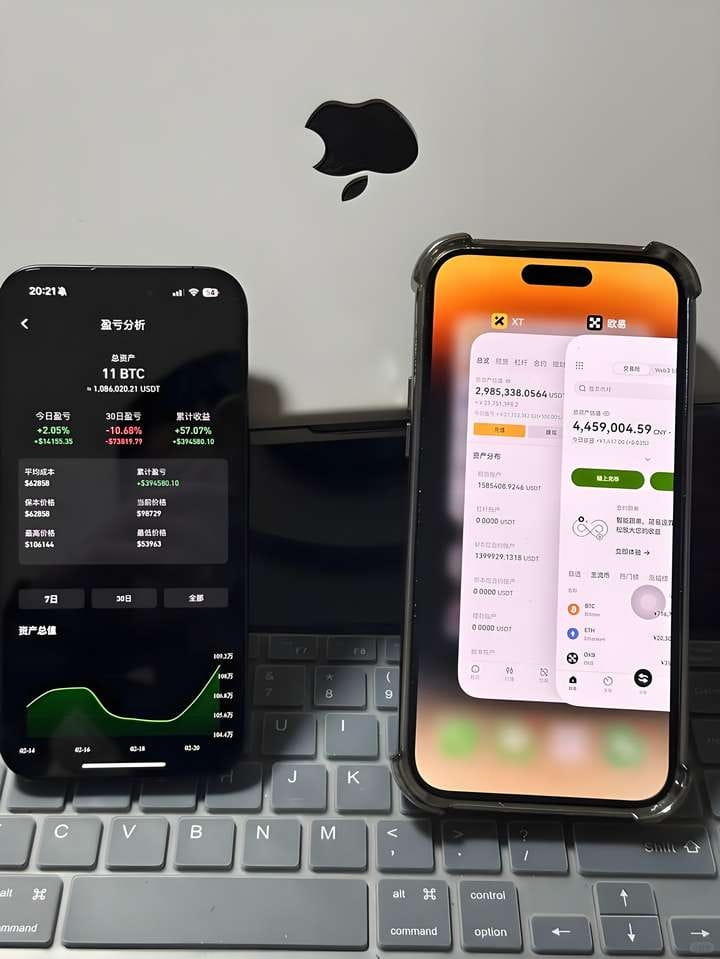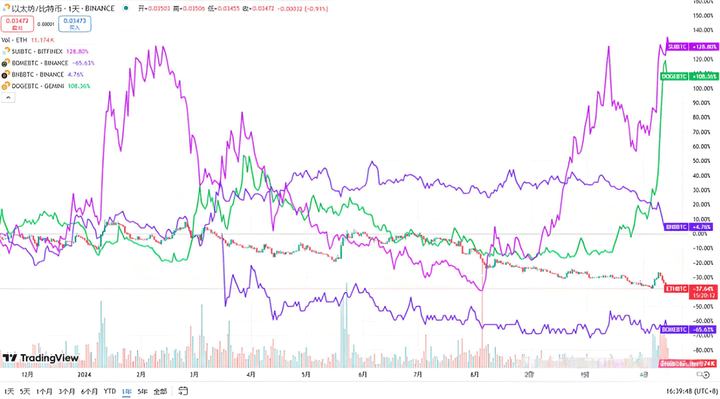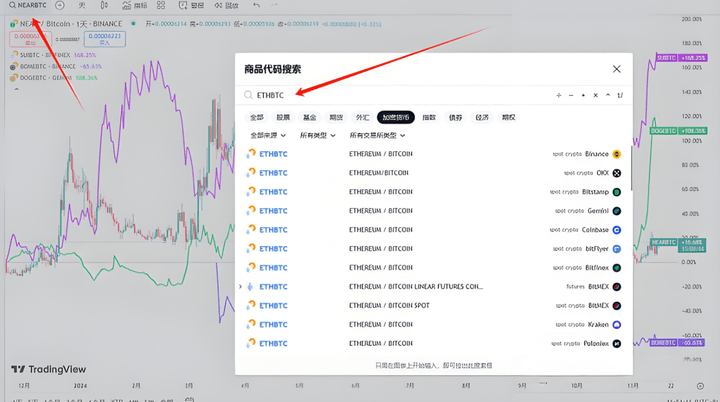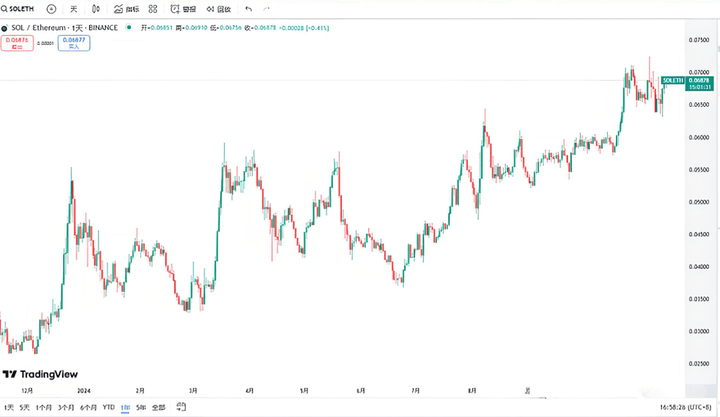A Decade of Trading Cryptocurrencies: From Over 10 Million in Debt to a Net Worth of Millions Through Turnaround and Winning Strategies
After graduating from university, I dove headfirst into the world of trading cryptocurrencies and have been at it for over ten years. Throughout this long trading career, I have summarized ten iron laws, which I have repeatedly studied hundreds of times and have long since memorized.
Looking back ten years, I entered the crypto space with an initial capital of 8,000 yuan. Fortunately, I entered just as a bull market began, and my assets quickly ballooned to over 10 million in a short time. However, the ever-changing market can catch you off guard. In the following three years of bear markets, I not only lost all the money I had previously earned but also accumulated over 8 million in debt. At that time, relatives and friends advised me to give up and steer clear of this risky market.
Yet I felt unsatisfied, thinking of using the last borrowed 200,000 yuan for one last gamble. So I resolutely threw myself back into the fray. Hard work pays off; with that 200,000 yuan capital, I miraculously earned 40 million over three years. The fact proves that when you truly discover a trading method that suits you and unflinchingly execute it, you can potentially achieve a life-changing turnaround.

Long ago, many crypto influencers mentioned the ETH/BTC exchange rate to assess the strength of Ethereum relative to Bitcoin.
Drawing lessons from one situation to another, this is actually a great ongoing approach to tracking and evaluating targets.
Many investment and financial management books will mention that, in the long run, most retail investors' returns from buying individual stocks are worse than those from regularly investing in index funds. This means that if you stare at K-lines every day, look at financial reports, research reports, and various financial news, analyze and trade, you may still not outperform the index.
Of course, the above statement may be more applicable to the U.S. stock market, as the Shanghai Composite Index has remained around 3,000 points for a long time, while the NASDAQ and S&P have continued to grow.
When we say a stock outperforms the index, it usually involves comparing the returns over a certain period. For example, the annualized return of Moutai may be 15%, while the annualized growth rate of the Shanghai Composite is 10%.
Referring to the idea of ETH/BTC, dividing the price of Moutai by the Shanghai Composite Index will yield a ratio. By tracking this ratio over the long term, you can understand the strength of Moutai's price relative to the Shanghai Composite Index. However, it seems no software has this functionality.
Speaking of the crypto space, besides the ETH/BTC trading pair, there are many other altcoin trading pairs against Bitcoin, which can be directly searched on Tradeview. For example, SOL/BTC; just search for SOLBTC. The ratios of different cryptocurrencies against Bitcoin can be visually displayed on the charts.
If someone tells you that a certain coin is strong, you can simply and brutally verify it by looking up its historical performance relative to Bitcoin.
Often, we intuitively feel whether a coin is strong, for example, when Bitcoin was at 70,000, ETH was at 3,000. When Bitcoin reached 90,000, ETH was still at 3,000, so that's why I never bought ETH.
For many coins that you haven't followed long-term, the short-term fluctuations over two or three days can be eye-catching, leading you to mistakenly believe they are strong. As long as you track their historical performance data against Bitcoin, you can clearly see whether they are strong relative to Bitcoin, rather than judging solely by gut feelings.
Below are some coins I selected along with their exchange rates against Bitcoin over a one-year period:

It can be seen that when Bitcoin halved in April, several coins had positive exchange rates against Bitcoin. Subsequently, except for BNB, other coins' exchange rates against Bitcoin turned negative, especially ETH and BOME, which not only have long-term negative exchange rates but are also continuously declining.
Meanwhile, SUI began to rebound in August, turned positive in September, and then experienced a sharp rise in exchange rates, followed by a correction from October to early November, but the price has risen again in recent days.
Dogecoin only turned positive in early November, and its recent surge was due to Musk's promotion.
Interested friends can compare charts with other coins against Bitcoin by searching for trading pairs directly in the Tradeview search bar, as shown in the figure below:

Why choose Bitcoin as the comparison base?
Without a doubt, everything besides Bitcoin is an altcoin; the market for other coins mainly relies on Bitcoin to drive it. Therefore, Bitcoin is akin to an index and holds the most reference value.
Of course, if you want to compare other coins, you can also search for the corresponding trading pairs. For instance, for SOL and ETH, you can directly search for SOLETH, but some obscure coins may not have corresponding trading pairs.

As shown in the above image, the exchange rate of SOL/ETH is positive, and it has continued to rise over the past year, indicating that SOL's price has become increasingly strong relative to ETH.
Although I am clickbaiting by saying this indicator is enough for trading coins, in reality, you cannot rely solely on this indicator. You must analyze each coin from both macro and micro perspectives, just as you would for stock analysis. After all, different coins have different properties, uses, and belong to different sectors, with varying growth prospects.
The above indicator or analysis approach may not guarantee that you select strong coins, but at least it can help you initially avoid some coins with weak long-term trends, which can help beginners in the crypto space avoid some pitfalls.
Finally, to summarize my insights on trading coins! The message is brief but highly valuable. If you find it useless after reading, you can say whatever you want!
1. Investment Mindset
In investment, you must use spare money. For the same investment project, if the source of your investment funds is different, the results will also differ. For example, if the money you are currently investing is borrowed out of debt and differs from idle funds, the results will definitely vary. If you borrowed money, you might panic sell when facing losses or miss out on profits, resulting in significant losses in pressured situations. However, if you are using idle funds, your mindset will be more relaxed, which is more conducive to long-term thinking and achieving substantial results. This highlights the importance of a healthy investment mindset.
2. Do not hold biases against any cryptocurrency
All major opportunities for making big money come from new things, new industries. Therefore, do not hold biases against any industry, any model, any cryptocurrency, any product, or any new thing. Often, bias equals poverty. Therefore, when investing, you must be exceedingly rational—no beliefs, no biases—viewing and investing rationally.
3. How to view long-term vs. short-term
For long-term coins, look at speculation; for short-term coins, look at ecosystems. There are many sub-coins of ETH, but how many are truly thriving? The answer is none. Why? Because the ecosystem of ETH is already comprehensive and perfect. For coins, the ecosystem is the most important. No ecosystem equals no traffic, and no traffic equals zero. The premise for coin speculation is the ecosystem; only with a good ecosystem is there potential for short-term price increases. Only when the ecosystem is robust will speculation take place, thus providing long-term value.
4. Simplify Thinking
In fact, in trading and the crypto market, there are often only a few actions that truly lead to profit. Many times, you need to simplify your approach. The longer you stay in the investment market, the more you'll find that less effort often leads to more profit, especially in the crypto space. The more you meddle, the faster you might lose your money, so simplifying your actions and thinking makes your limited actions more apparent. The great way is to simplify.
5. Capital First
In any financial transaction, remember one thing: capital comes first. Protecting your capital is the priority. Capital first, profit second, especially when you first start engaging and building your position. First, do things with certainty, buy coins with certainty, and then consider high-return, high-risk ventures. First, protect your capital, then your profits, and only then plan your next steps.
6. Risk Control
What is the difference between investment and speculation? The purpose differs: investment aims for long-term stable returns, while speculation aims for short-term high profits.
Time Difference: Investment is long-term, usually held for more than one year, while speculation is short-term, typically held for less than one year.
Risk Difference: Investment risk is relatively low because it is based on fundamental analysis of assets or companies, while speculation carries relatively high risk because it is based on guesses regarding market fluctuations.
Research Level Difference: Investment requires detailed research and risk assessment to make informed decisions, while speculation typically does not require detailed research, relying instead on market changes to generate profits.
Different Influencing Factors: The main influencing factors for investment are the fundamentals of the company, the economic environment, etc., while the main influencing factors for speculation are market fluctuations and psychological factors.
Thus, risk control determines whether you are investing or speculating.
Before investing, you must have a comprehensive and detailed investment plan. The most taboo in investing is inconsistency and following the crowd.
7. Entry Timing
In the crypto space, especially in the spot market, what do we want? We want to buy when no one is paying attention and sell when voices are loud. Thus, entering the market during a downturn, buying before most people enter, and believing in cyclical and long-term thinking are crucial. What is a good entry timing? It is when many people dare not buy, many people do not know, and many people do not want to buy.
8. Empty Cup Mindset
Many people fail to make money in the spot market because they do not maintain an empty cup mindset, constantly chasing highs and cutting on dips. They buy during the uptrend and panic sell during corrections, only to see the price rise again right after they sell, creating a continuous cycle. I believe the highest state for spot trading is to hold coins without attachment, which is why I always suggest that once you buy coins, set up good habits for flipping to cover costs. Only by achieving zero-cost across the board early can you truly hold on.
9. Eliminate Pathological Investment
Do not fall into FOMO for any product or cryptocurrency, as FOMO is inherently a pathological investment behavior. For investing, it is essential to remain rational and absolutely calm. Never fall into FOMO under any circumstances; completely eliminate pathological investing, and never put yourself in danger. Always leave yourself three escape routes.
10. The Essence of Investment
When investing, you are engaging in high-probability events, not absolute certainties. Therefore, spread the net widely but do not scatter it aimlessly. Everything must have a reason; if you think you can succeed in investing just by guessing, what is the purpose of having professionals? Anyone who has traded stocks knows that determining whether a stock will rise must involve comprehensive information analysis, and buying when the probability of an increase is high. But is it absolutely certain? No. Black swans are common. Remember the situation when the regulatory commission issued a statement at 3 PM one day, and stocks plummeted the next day? The same applies to the crypto space; just engage in high-probability actions.
11. Do not chase trends without positioning
Chasing trends, without a doubt, leads to being cut. Unless you have already positioned yourself in advance, otherwise, there’s no need to chase.
The above are some of Yan An's own views and insights. If you find them helpful, feel free to like and save them. I am Yan An, someone who has experienced three cycles of bull and bear markets, skilled in logical coin selection and technical timing, only engaging in trades within my cognitive range, with every directional move validated by the market!
No matter how diligent a fisherman is, he will not go out to sea in stormy weather but will carefully guard his fishing boat. This season will eventually pass, and sunny days will come! Follow Yan An, who will give you both fish and fishing skills; the door to the crypto world is always open. Going with the trend allows you to lead a life in alignment with the trend. Save this and remember it!


